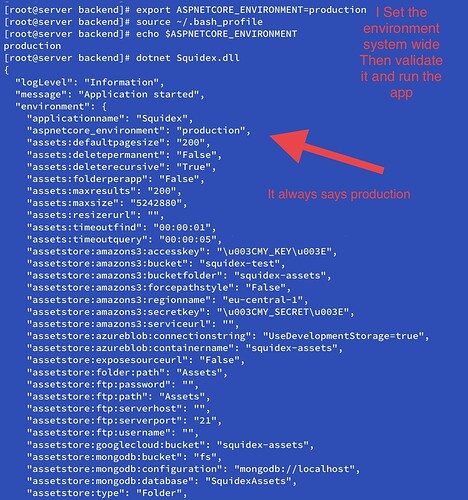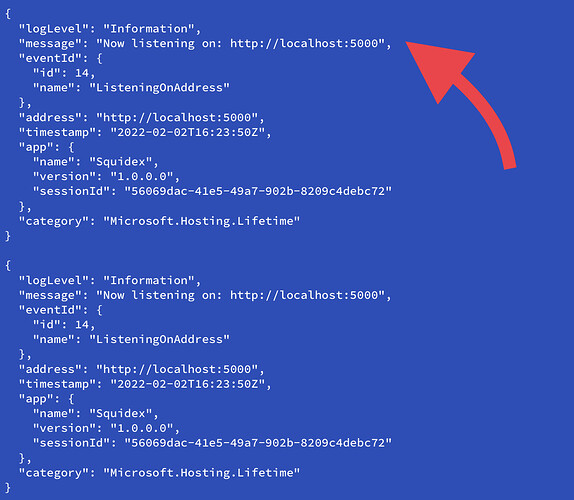I have…
- [x] Read the following guideline: https://docs.squidex.io/01-getting-started/installation/troubleshooting-and-support. I understand that my support request might get deleted if I do not follow the guideline.
I’m submitting a…
- [ ] Regression (a behavior that stopped working in a new release)
- [ ] Bug report
- [ ] Performance issue
- [ ] Documentation issue or request
Current behavior
- dotnet runtime 6.0 is installed.
- MongodDB installed and running.
- run the app with:
dotnet Squidex.dll - Kestrel server runs without errors.
- the console prints the correct hostname.
- the console prints the following also:
“logLevel”: “Information”,
“message”: “Now listening on: http://localhost:5000”,
even tho I have changed the baseUrl to the server IP before I deploy and run.
When I open http://<server_ip>:5000 or http://:5000 nothing loads
The port is open and no firewall is blocking.
Expected behavior
Squidex to load.
Minimal reproduction of the problem
Environment
Rocky Linux 8.5 RHEL 8
App Name: Squidex
- [ ] Self hosted with docker
- [ ] Self hosted with IIS
- [x] Self hosted with other version
- [ ] Cloud version
Version: 6.4.0
Browser:
- [ ] Chrome (desktop)
- [ ] Chrome (Android)
- [ ] Chrome (iOS)
- [ ] Firefox
- [ ] Safari (desktop)
- [ ] Safari (iOS)
- [ ] IE
- [x] Edge
Others:
The configs are set as:
// Set it to true to redirect the user from http to https permanently.
“enforceHttps”: false,
// Set it to true to return a 400 if the host does not match.
“enforceHost”: false,
so it’s not SSL


 .
.